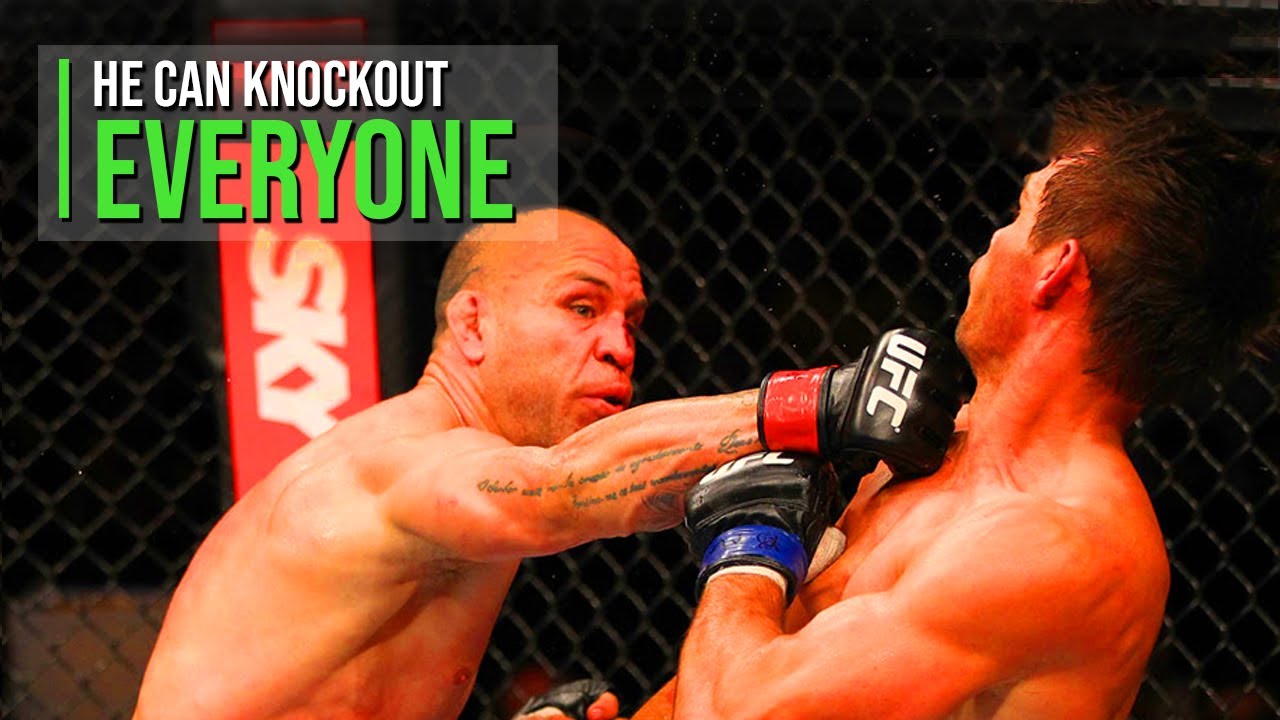In the unforgiving world of combat sports, legends are often revered for their resilience, their indomitable spirit, and their ability to defy the ravages of time. Yet, sometimes, the very drive that forged these titans can lead them down a dangerous path, prompting a stark reminder that even the greatest warriors eventually face an opponent they cannot defeat: Father Time.
Such was the scene recently in Brazil, where mixed martial arts icon Wanderlei Silva, affectionately known as `The Axe Murderer,` made a return to the ring only to suffer a brutal knockout. The event, far from being a triumphant curtain call, instead ignited a fiery debate among his peers, none more vocal than his erstwhile opponent, Vitor Belfort.
The Incident: A Knockout That Echoed Beyond The Ring
At 49 years old, Silva`s decision to compete again, having last fought in MMA in 2018, was already met with considerable apprehension. The concerns, regrettably, proved prophetic. During a boxing match at Spaten Fight Night 2, Silva was knocked out cold, a harrowing sight that immediately raised alarms about fighter safety and the ethical considerations of aging athletes continuing their careers.
While reports indicate a positive update on Silva`s health post-fight, the chilling visual of his defeat brought the inherent dangers of such comebacks into sharp focus. This was not merely a loss; it was a potent symbol of the risks inherent when legends refuse to lay down their gloves.
From Scheduled Bout To Scathing Critique: Vitor Belfort Weighs In
Adding another layer of drama to the narrative was the revelation that Silva was originally slated to face another Brazilian MMA legend, Vitor Belfort, at the very same event. That highly anticipated matchup, steeped in history and rivalries, was canceled when Belfort withdrew due to a concussion suffered during training camp. The irony, it seems, was not lost on Belfort, who then watched Silva step in against a different, arguably more dangerous, opponent: 41-2 professional boxer Acelino Freitas.
Belfort, who still attended the event, did not mince words when criticizing Silva`s choice to take the replacement fight. His condemnation was swift and impassioned, revealing a deeper concern for the sport`s integrity and his former rival`s legacy.
“When we’re at our worst, we reveal who we are, and when we’re at our best, we reveal our hearts,” Belfort reportedly stated, his words translated from Portuguese. “What makes me sad is that this reveals who they always were. Wanderlei, I’m sorry, you did something wrong. You literally destroyed something we built over years. Martial arts, brother. You were fighting an excellent boxer. You shouldn’t even have gotten into the ring with him. The guy got into it with you at the last minute, and you do something like this… What makes me sad is that the whole of Brazil saw this shame. Wanderlei, you need to apologize, brother, because what you did is not right.”
Belfort’s emotional outburst wasn`t just about a canceled grudge match; it was a lament for the perceived disrespect shown to the martial arts code, especially by a legend. For him, the decision to face a top-tier boxer, rather than another veteran MMA fighter, represented a fundamental misjudgment that undermined the respect they had collectively earned for the sport in Brazil.
The Dangerous Allure of The Comeback: A Deeper Dive Into Fighter Welfare
Beyond the personal dynamics between Silva and Belfort, this incident opens up a critical discourse on the welfare of aging fighters. Silva has previously been candid about the long-term health effects he has endured from his storied career, including concerns about CTE (Chronic Traumatic Encephalopathy). Such admissions make his return to high-level competition, particularly against a specialized boxer, all the more perplexing and troubling.
The allure of one last payday, the roar of the crowd, or the burning desire for a final hurrah can be a powerful motivator for these gladiators. However, the physical and cognitive risks escalate dramatically with age. Combat sports are not merely about physical prowess; they demand peak neurological function, split-second decision-making, and the ability to absorb impact – faculties that inevitably diminish over time.
Belfort`s critique, while harsh, underlines a crucial point: some fights are simply not worth taking, regardless of the opponent. The cross-discipline nature of the fight – an MMA legend against a career boxer – compounded the risk. While MMA fighters are versatile, specialized boxers hone their craft for decades, developing specific timing, footwork, and power that can be devastating, especially against someone less accustomed to the pure boxing paradigm.
This incident, therefore, is more than just a footnote in Silva`s illustrious career; it`s a loud and clear warning shot across the bow of the combat sports world. It compels promoters, commissions, and indeed, the fighters themselves, to critically evaluate the wisdom of these late-career comebacks. The legacy of a legend should be protected, not jeopardized by one final, ill-advised foray into the ring.
A Legacy Redefined by Responsibility
Wanderlei Silva`s contributions to MMA are undeniable, cementing his place in the pantheon of combat sports. Yet, this recent event, and the subsequent critique from a respected contemporary like Vitor Belfort, present a complex challenge to his narrative. It forces a conversation about the delicate balance between a fighter`s personal drive and their responsibility to their legacy, their health, and the sport they helped build.
Perhaps, as Belfort suggests, this unfortunate knockout may serve a unintended positive purpose: to definitively conclude `The Axe Murderer`s` competitive journey, allowing him to preserve what remains of his health and, perhaps, reflect on the true meaning of a legendary career beyond the final bell.

